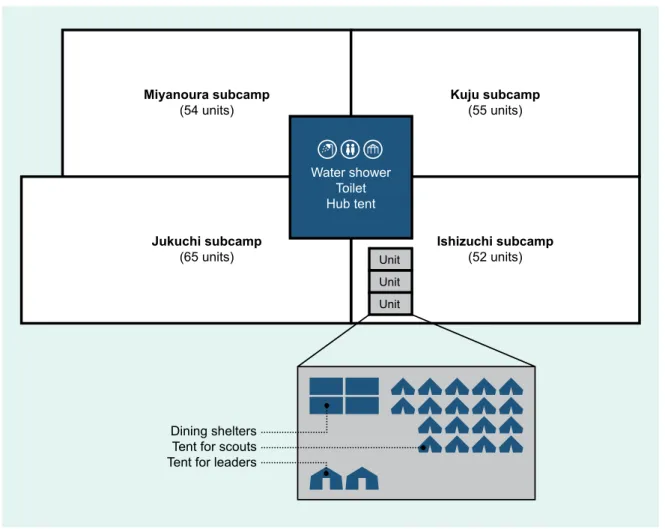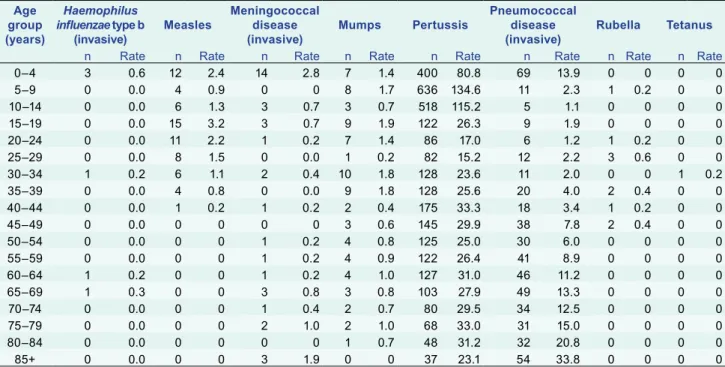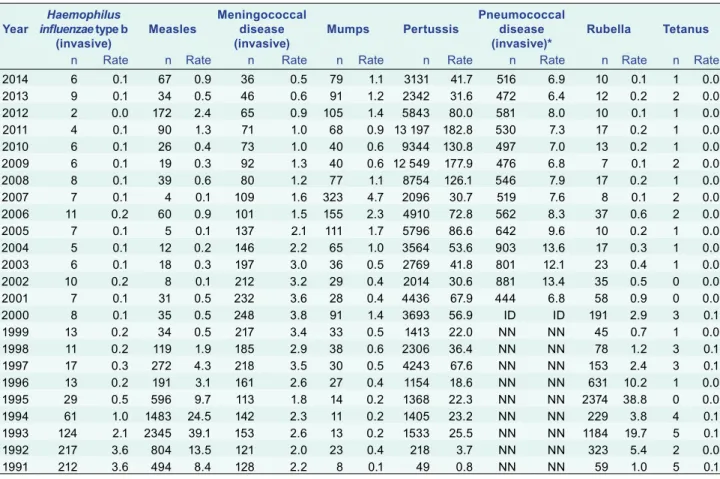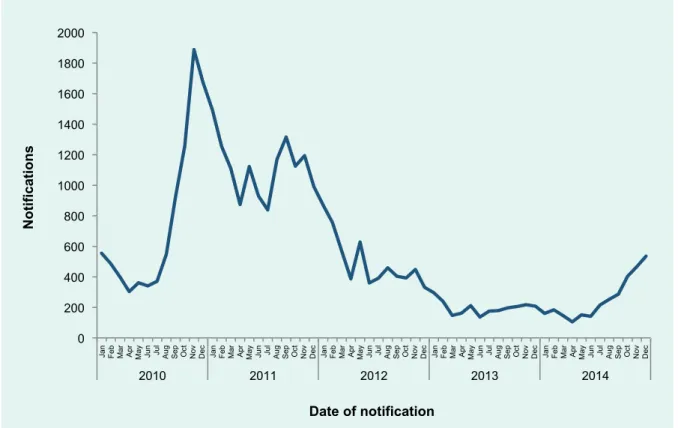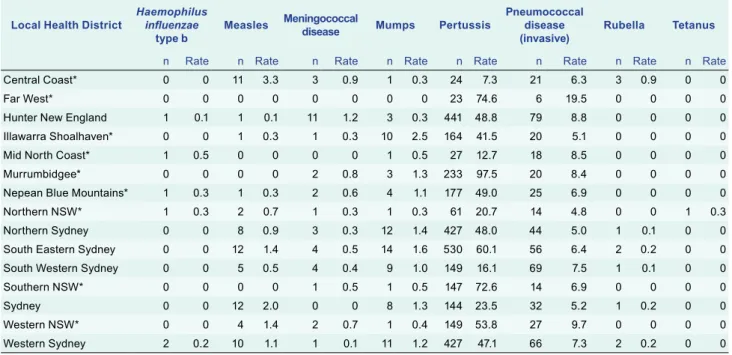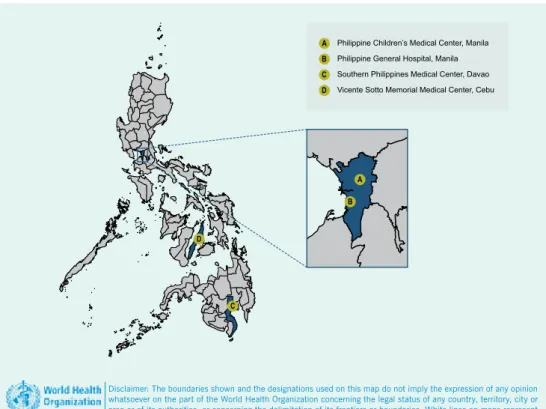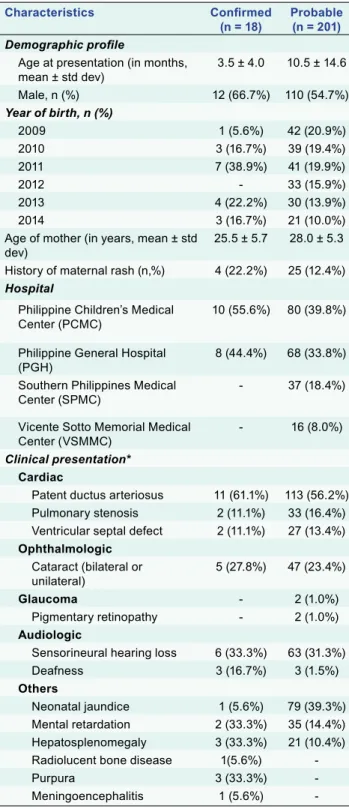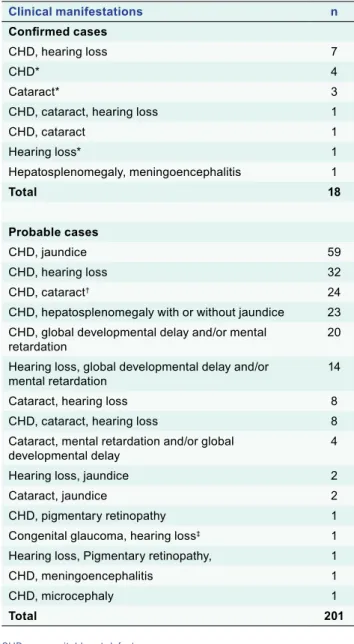The World Health Organization does not necessarily own every component of the content contained in these articles and therefore does not warrant that the use of any individual components or parts owned by third parties contained in the articles will not infringe the rights of those parties. the third. . Six of the seven cases initially tested had a common MLVA pattern suggesting an epidemiological link. In addition, one of five cases with a different MLVA pattern was interviewed before MLVA results were available, and one case related to the cohort but whose specimen was not obtained was also interviewed (Fig. 1) .
Of the nine (64%) cases interviewed, seven presented to the emergency department of the hospital (seven required admission and two were treated in the emergency department). In response to the complaint made about the bakery, the New South Wales Food Authority (NSWFA) was informed and an inspection of the premises was carried out on 25 September 2015. The application of spatiotemporal cluster scanning and MLVA typing led to the detection of an outbreak of STm in NSW that facilitated a multi-agency intervention to prevent further spread of the infection.
Monitoring the incidence and causes of potentially foodborne illnesses in Australia: OzFoodNet Network annual report, 2011. Thirty-four of the cases were genotyped: 21 were genotype B3, 10 genotype D8, two genotype D9 and one genotype G3. Of the 67 cases, 49 occurred in individuals who were either unvaccinated or did not know their vaccination status.
Of the other 18 cases, 16 were vaccinated (five were recorded as receiving one dose, five with two doses, six with unknown number of doses) and two had. invasive) Mumps Pertussis Pneumococcal disease.
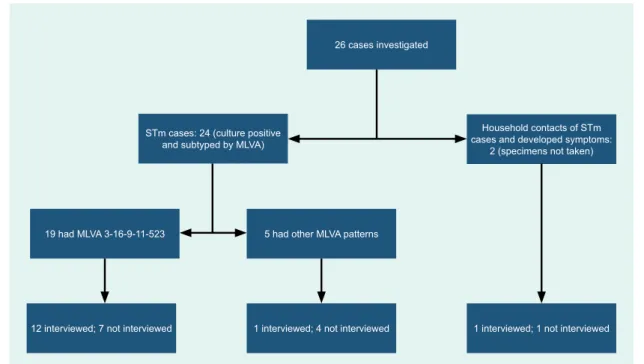
DISCUSSION
Data from NSW disease surveillance systems are subject to the limitations inherent in any disease surveillance program. For high-severity diseases such as IMD or measles, it is likely that all cases will be captured in surveillance, but for conditions such as whooping cough, notifications will only represent a proportion of actual cases.
CONCLUSION
Sydney: Government of New South Wales; 2016 (http://www.health.nsw.gov.au/ . Infectious/controlguideline/Pages/default.aspx). Introduction: In May 2014, an outbreak of norovirus occurred among diners at a restaurant in Melbourne, Australia. Investigations were conducted to identify the infectious agent, mode of transmission and source of disease and to implement controls to prevent further transmission.
Methods: A retrospective case-control study was conducted to test the hypothesis that food served at the restaurant between 9 and 15 May 2014 was the vehicle for infection. A structured questionnaire was used to collect demographic, disease and food exposure data from study participants. To determine whether any food handlers experienced gastroenteritis symptoms and were a possible source of infection, investigators contacted and interviewed staff who worked at the restaurant between May 9 and 16, 2014.
Results: Forty-six cases (including 16 laboratory-confirmed norovirus cases) and 49 controls were interviewed and enrolled in the study. An interviewed staff member who reported an onset of acute gastrointestinal illness on 12 May 2014 had prepared salads on the day of onset and the previous two days. The outbreak highlights the importance of exclusion of symptomatic food handlers and strict hand hygiene practices in the food service industry to prevent contamination of prepared foods and the kitchen environment.
Noroviruses are nonenveloped, single-stranded RNA viruses known to be the leading cause of acute gastroenteritis worldwide.1 Currently, six norovirus genogroups are recognized, three of which (GI, GII, and GIV) cause human disease.2 Norovirus is transmitted via the fecal-oral route primarily through close contact with an infected person, contact with contaminated fomites, or consumption of contaminated food or water.3 The average incubation period is between 24 and 48 hours, with symptoms including vomiting with acute onset, diarrhea, nausea, myalgia and low fever. 4 Infected individuals shed the virus while symptomatic; however, shedding has been documented before symptom onset, after symptom resolution, and from asymptomatic infected individuals.5–7 Contamination of food from symptomatic and asymptomatic infected food handlers is well documented.8–14. In response, an outbreak investigation was launched with the local council's health department to identify the infectious agent, the mode of transmission, the source of the disease and implement controls to prevent further transmission. A retrospective case-control study was conducted to test the hypothesis that food served in the restaurant was the vehicle of infection.
Whenever possible, stool samples were obtained from cases and tested for intestinal bacterial pathogens in MDU PHL. The samples were tested for norovirus by reverse transcription polymerase chain reaction (RT-PCR) at the Victorian Infectious Diseases Reference Laboratory and nucleotide sequencing of norovirus RNA was performed where appropriate, as previously reported.14. Ethical approval was not sought, as the study was conducted as part of a public health response to an outbreak.
RESULTS
This outbreak highlights the importance of exclusion of symptomatic food handlers and strict hand hygiene practices in the food service industry to prevent contamination of ready-to-eat foods and the kitchen environment. Introduction: In line with the regional goal of eliminating rubella and congenital rubella syndrome (CRS), phased introduction of rubella-containing vaccines (RCV) into the Philippines' routine immunization program began in 2010. We estimated the burden of CRS in the country before widespread nationwide programmatic RCV use.
Discussion: This is the first attempt to assess the national CRS burden using in-country hospital data in the Philippines. Prospective surveillance for CRS and further strengthening of ongoing measles-rubella surveillance are needed to establish accurate estimates of the burden of CRS and the impact of programmatic RCV use in the future. In the Philippines, a pilot project introduced RCV in five of the country's 18 regions in 2009.
We aimed to estimate the burden of CRS in the country through a retrospective chart review to provide a baseline before widespread introduction of rubella vaccines. The numerator was the respective number of probable or confirmed CRS cases in one of the three study sites, and the denominator was the number of live births in the same hospitals from 1 January 2009 to 31 December 2014. Using the reported live births in the country during each participating hospital using the insurance requirements.
WHO estimates that there were 150 cases of CRS per 100,000 live births in the Philippines in 2010, or about 2674 cases of CRS, much higher than estimates obtained. Currently, women of childbearing age are not systematically targeted for rubella vaccination in the Philippines. But despite the four hospitals' large catchment areas, there are more than 1,800 hospitals in the Philippines.
It is estimated that 30% of the population uses private medical care for a fee.29 Secondly, there are differences between the hospitals included in the study. 24th Meeting of the Technical Advisory Group on Immunization and Vaccine Preventable Diseases in the Western Pacific. To our knowledge, this is the first attempt to estimate the burden of CRS using hospital data in the Philippines.
Prospective surveillance will be important to find out the true burden of CRS in the Philippines. Preparing for the Elimination of Congenital Rubella Syndrome (CRS): Summary of a Workshop on the Elimination of CRS in the United States.

PROBLEM
CONTEXT
In this WSJ-related outbreak, the assault rate (AR) among UK participants (scouts and leaders) was 102.2 cases per 100,000 participants (three cases in 2934 participants).
ACTION
OUTCOME
Although no information was available on close personal contact between participants, WSJ's close-knit living environment and events, such as discotheques and campfires, may have increased the risk of spreading meningococcal disease. Even if the incidence of IMD is low in the host country, a mass gathering creates special circumstances that can lead to IMD outbreaks among participants. In the United Kingdom, serogroup B accounted for the majority of IMD cases, as well as most European countries in recent decades;11 however, serogroup W has increased rapidly since 2009 and accounted for 25% of all IMD cases in England in 2014 and 2015.11 The species associated with this outbreak was indistinguishable from those recently circulating in England and Scotland.
This meningococcal outbreak highlighted the potential risk of IMD outbreaks during mass gatherings, even in low-incidence countries. Meningococcal disease is listed in the International Health Regulations as a disease with potentially serious public health consequences and rapid international spread.6 In 2000 and 2001, meningococcal outbreaks caused by serogroup W were reported in England and France respectively, both associated with travelers to Hajj.7 . The risk of transmission of meningococcal disease may increase with close and prolonged contact, such as between household members, or with patients and carriers kissing or sharing eating or drinking utensils.3.
An international outbreak of invasive meningococcal disease due to a new and rapidly expanding strain of serogroup W, Scotland and Sweden, July to August 2015. Outbreak of invasive meningococcal disease in the EU associated with a mass gathering, the 23rd World Scout Jamboree, in Japan. Outbreak of Neisseria meningitidis capsule group W among scouts returning from World Scout Jamboree, Japan, 2015.
Cases of meningococcal disease in Scotland and Sweden following participation in the World Scout Jamboree, Yamaguchi, Japan, July 28-8. August 2015. In the event of an outbreak, it is recommended that prophylaxis be given to all close contacts of a case and that persons identified as high risk be vaccinated.3,14,15 Tetravalent meningococcal conjugate vaccines against groups A, C, Y and W (MCV4) have have been available in Japan since May 2015 and could be an effective measure to prevent IMD outbreaks at mass gatherings in Japan. Currently, however, MCV4 is not included in the routine vaccination schedule due to the low incidence of IMD.
Mass gathering creates special circumstances that can cause an outbreak of IMD among participants even in low-incidence countries. London: Public Health England; 2013 (https://www.gov.uk/government/publications/ . meningococcal-the-green-book-chapter-22, accessed 5 April 2017). Cohn AC, MacNeil JR, Clark TA, Ortega-Sanchez IR, Briere EZ, Meissner HC, et al.; Centers for Disease Control and Prevention (CDC).
